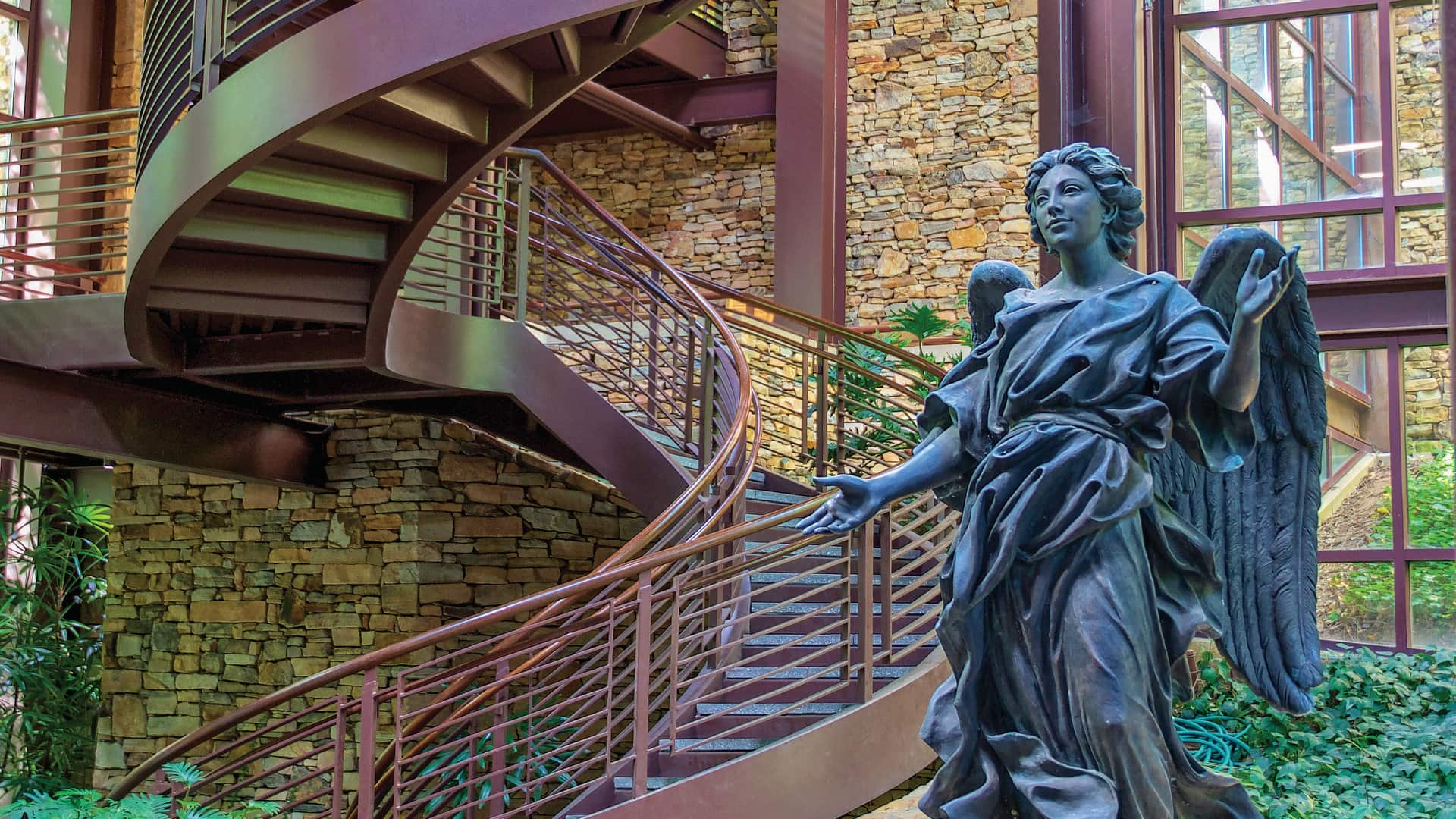The largest of these is the multipurpose Pete Hanna Center, which seats 6,000 for events such as commencement and concerts, and 5,000 for basketball games and volleyball matches. Dedicated in 2007, the structure is named for the Birmingham industrialist and Samford alumnus who has supported the university over the years. In addition to housing intercollegiate athletic facilities and offices, the center is home to the Samford Athletics Hall of Fame, established in 2017.
Another major structure added to the Samford landscape during the Westmoreland era includes Cooney Hall, a state-of-the-art building that was completed in 2015 and is home to Samford’s Brock School of Business. The building is named for Samford alumnus and business leader Gary Cooney, and the business school is named for the late Harry Brock, who served as a Samford trustee for more than 50 years.
In what proved to be one of the most creative uses of university surroundings, in 2015, Samford completed the purchase of Southern Progress Corporation property adjacent to the campus and remodeled its existing buildings to serve as the home of its College of Health Sciences. Helping to mark the occasion, the iconic Healing Angel statue symbolizing Samford’s Moffett & Sanders School of Nursing was moved to a new location in the atrium of the College of Health Sciences facility.
In 2019, Samford completed an extensive remodeling of Ralph W. Beeson University Center, modernizing and expanding the facility for student and employee use. The $20-million renovation included a new food court, expanded Samford Shop, student commons, post office, Dale-Washington Courtyard, and student life and student affairs spaces. The building retained the longstanding name of beloved university benefactor Ralph W. Beeson.
Other notable additions to the campus during the Westmoreland era included the Jane Hollock Brock Recital Hall (2006), the Sullivan- Cooney Family Field House (2009) and the Samford Track and Soccer Stadium (2017).
Facilities housing art and theatre programs were renamed Bonnie Bolding Swearingen Hall in 2006. In 2015, an existing building was extensively revised as the Art Lofts. In 2009, Samford's existing science building was dedicated as William Self Propst Hall, honoring the 1961 graduate.
New residence halls were constructed in 2013, including Barbara Drummond Thorne Hall, two adjacent residence halls and West Village. In 2017, the Tri Delta House was opened on the site of the former faculty apartments.
In 2018, the university undertook an extensive renovation of its Daniel House residence hall property in London, including new furnishings and fixtures throughout the building.
In the current and final year of the Westmoreland presidency, the central administrative building, Frank Park Samford Hall, is undergoing needed renovations as well as electrical, plumbing, mechanical and security updates.
The sounds of construction have been an ongoing theme of the Westmoreland era as Samford sought to provide facilities that complement and maintain its programs of quality higher education.
In 2016, Samford’s Board of Trustees approved a 20-year campus master plan. The four- phase plan addresses infrastructure needs for the entire campus, increases energy efficiency, practices campus-wide conservation, and refreshes and renews every facility.


